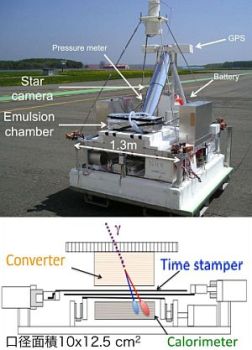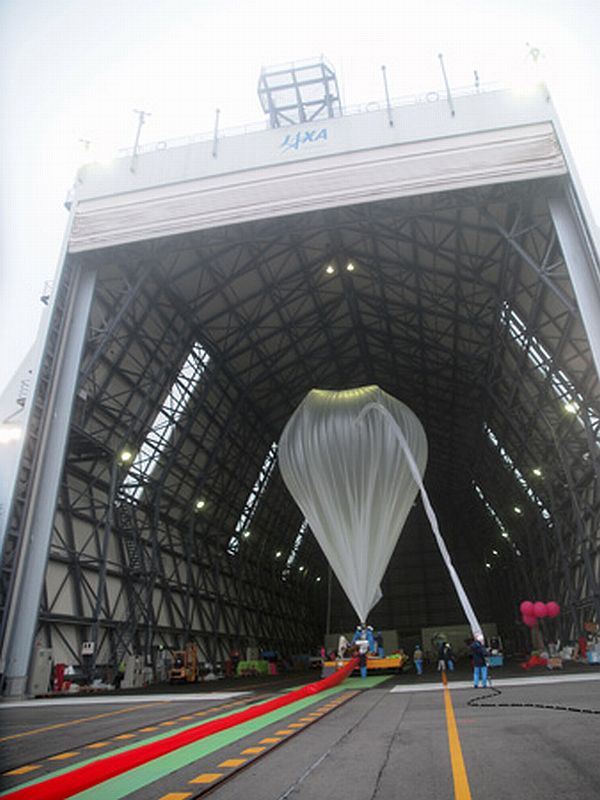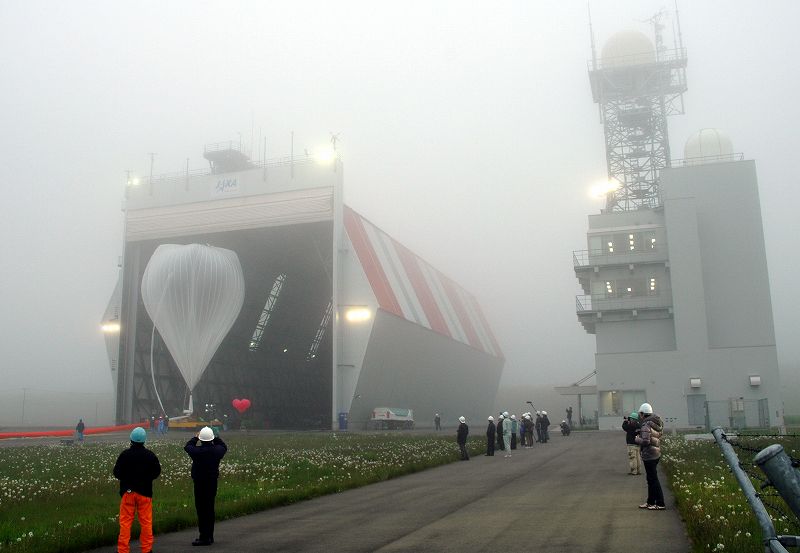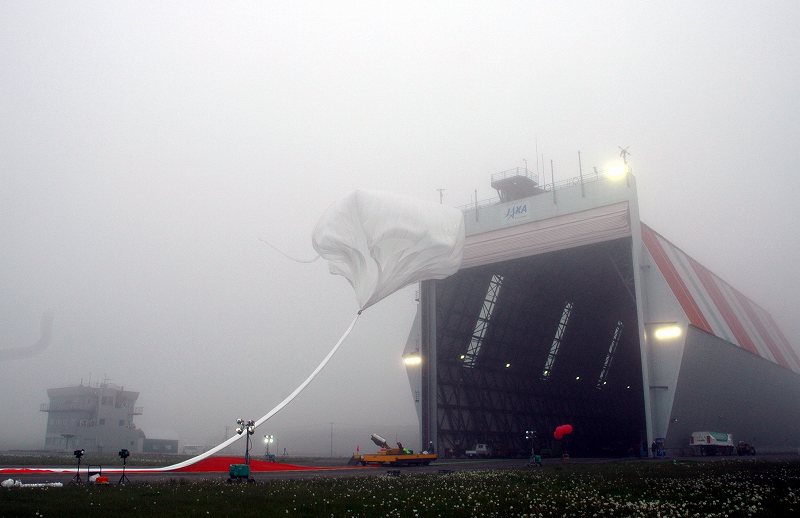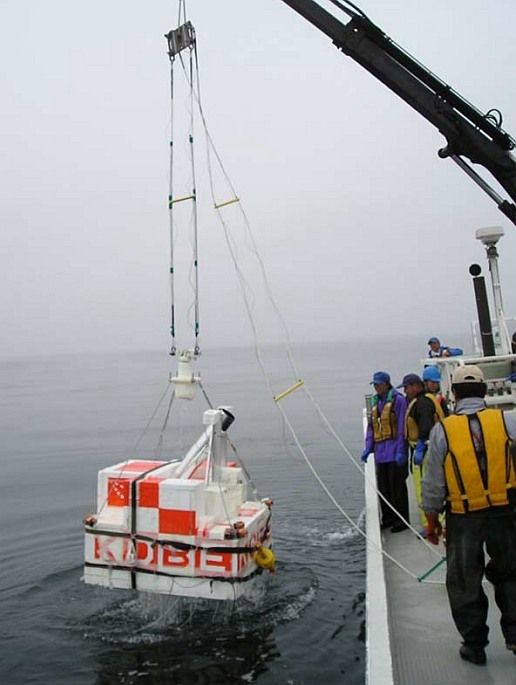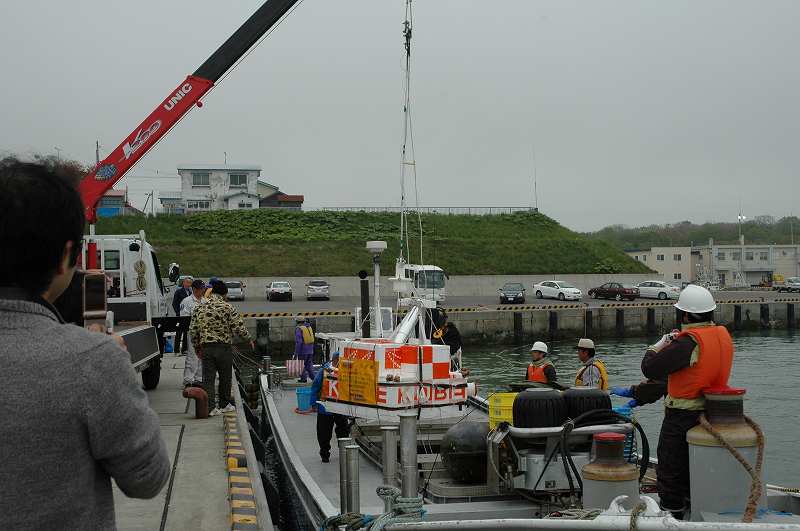Purpose of the flight and payload description
GRAINE is the acronym for Gamma-Ray Astro-Imager with Nuclear Emulsion, is a high-resolution gamma-ray telescope for the observation of cosmic gamma-rays onboard long duration balloon missions. The instruments observes particles in the energy range between 10 MeV and 100 GeV, with emulsion plates that combines high precision, sensibility to the polarization and large-aperture-area. It was developed by an extensive collaboration that includes Kobe University, Nagoya University, Okayama University of science, Aichi University of Education and Gifu University and counts with the fundamental support of the balloon program of the Japan Aerospace Exploration Agency (JAXA).
Basically, the instrument is composed by a converter, a timestamper, a calorimeter and an attitude monitor. The converter consists of an stack of emulsion films (with metal foils) where the beginning of electron pairs are detected. The timestamper is composed by a multi-stage shifter which gives a time resolution below a second to events at the converter. The calorimeter consists of a stack of emulsion films with metal plates that measures high energy particles either by measuring the energy of the electro-magnetic shower or the momentum of electron pair with multiple coulomb scattering. Particles of low energies are measured at the converter by measuring the momentum of electron pair with multiple coulomb scattering.
The attitude monitor consists of a star camera located outside the gondola. By combining the attitude monitor information and the event timing, the gamma-ray direction relative to the celestial sphere could be determined. In order to fully exploit the excellent spatial resolution of emulsion films, it is very important to keep the structure of the emulsion chamber robust and ensure that the alignment between them does not change during the observation period. Thus, the entire emulsion telescope is placed in a pressure vessel to ensure that the emulsion chamber would remain vacuum-packed at ballooning altitudes.
The scheme that we see at left is the reduced version flown in 2011. For this first experiment was installed on a gondola the emulsion chamber, star camera, temperature and pressure sensors, GPS systems, and a battery. The emulsion chamber was installed in a 1 mm thick aluminum enclosure removed around the upper part of the chamber without a pressure vessel, to reduce thickness and total weight. The entire instrument was installed in a waterproof container to survive the recovery from the ocean.
Details of the balloon flight
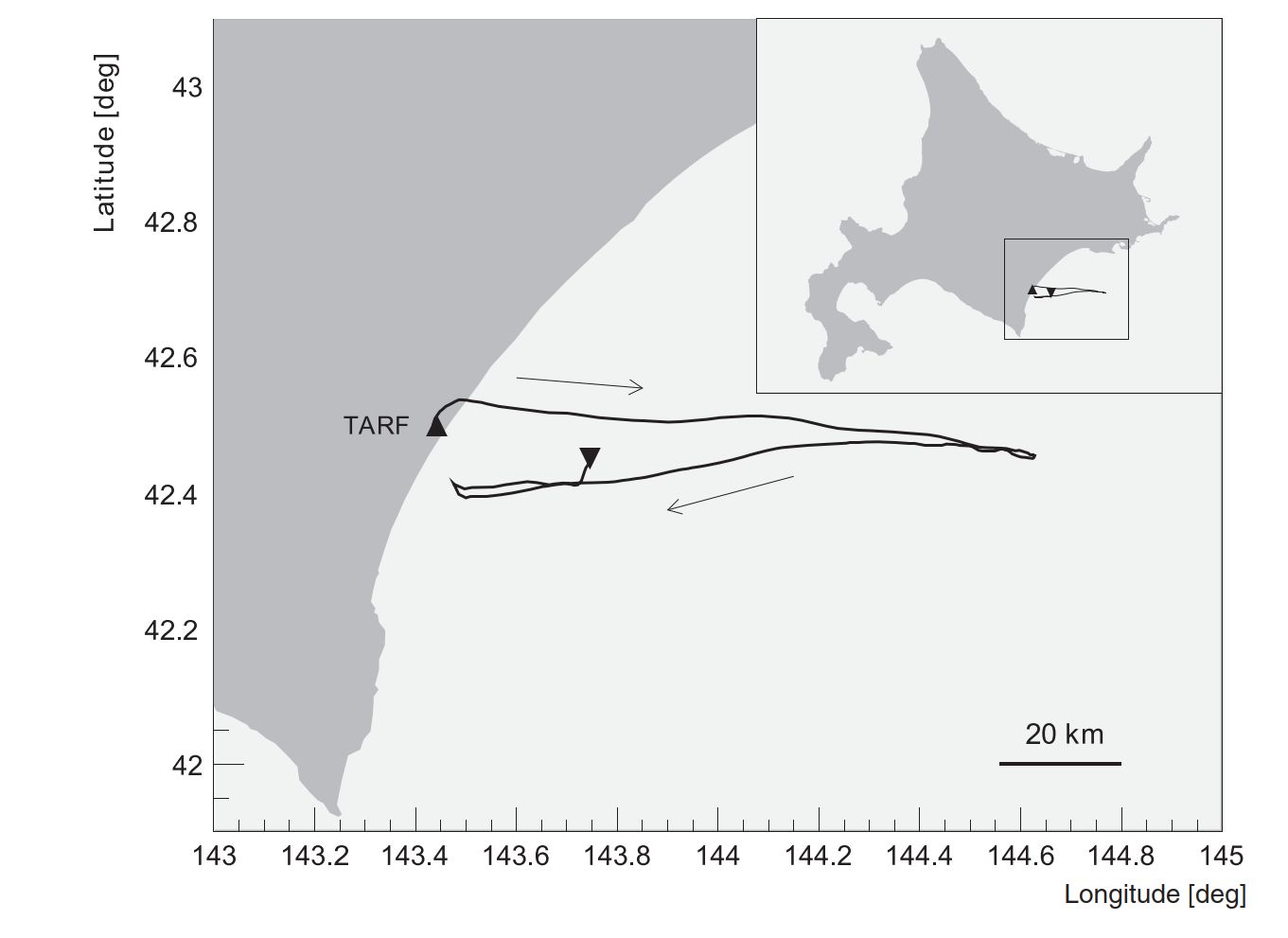
Balloon launched on: 6/8/2011 at 5:04 jst
Launch site: Multipurpose Aviation Research Field, Taiki-Cho, Hokkaido, Japan
Balloon launched by: Japan Aerospace Exploration Agency (JAXA)
Balloon manufacturer/size/composition: Zero Pressure Balloon model B100 100.000 m3
Flight identification number: B11-02
End of flight (L for landing time, W for last contact, otherwise termination time): 6/8/2011 at 8:50 JST
Balloon flight duration (F: time at float only, otherwise total flight time in d:days / h:hours or m:minutes - ): 4 h 20 m
Landing site: In the Pacific Ocean
The balloon was launched at 5:04 Japan Standard Time (JST) on 8 June 2011 from the Taiki Aerospace Research Field (TARF) in Hokkaido, Japan. Level flight at 34.7 km altitude and 6.5 hPa residual atmospheric pressure (6.6 g/cm 2 atmospheric depth) started from 7:14 JST. System shutdown was initiated at 8:40 JST and the gondola was released at 08:50 JST.
After descent under parachute the gondola splashed down at sea at 9:24 JST and was successfully recovered 20 minutes later. The total flight time for this experiment was 4.3 hours, with 1.6 hours at an altitude of 34.7 km.
External references
- GRAINE project home page Kobe University website
- GRAINE project, prospects for scientific balloon-borne experiments Adv. Space Res.(2017)
- GRAINE project: The first balloon-borne, emulsion gamma-ray telescope experiment Prog. Theor. Exp. Phys. (2015) 043H01
10152If you consider this website interesting or useful, you can help me to keep it up and running with a small donation to cover the operational costs. Just the equivalent of the price of a cup of coffee helps a lot.

